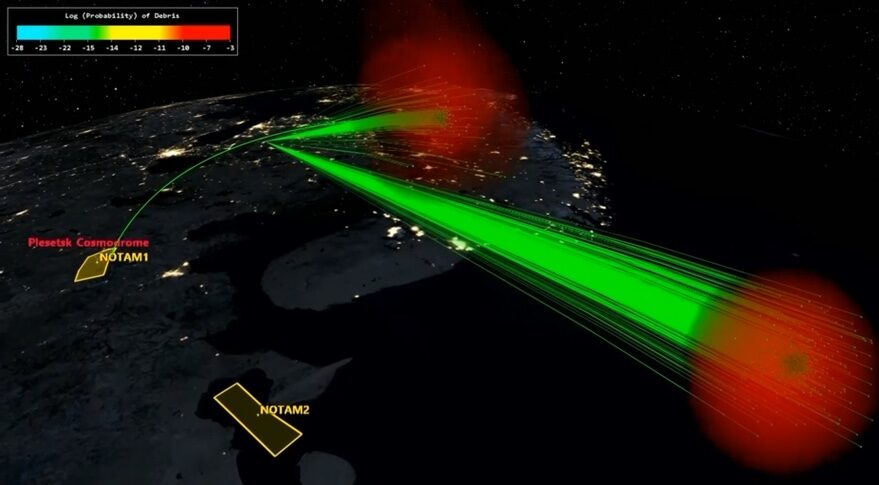
WAILEA, Hawaii — Nearly two-thirds of the debris tracked from last year’s Russian anti-satellite (ASAT) test has since deorbited, but it could take more than a decade for the rest to reenter.
In a talk at the Advanced Maui Optical and Space Surveillance Technologies (AMOS) Conference here Sept. 28, Deshaun Hutchinson, an orbital analyst with the Space Force’s 18th Space Defense Squadron, said that as of August, there were 1,783 tracked objects associated with the November 2021 destruction of the Cosmos 1408 satellite by a Russian direct-ascent ASAT.
The squadron identified those objects more quickly than in past debris events, like the Chinese ASAT test in 2007. He credited a “megaconstellation team” in the squadron, tasked with monitoring the deployment of satellite systems like OneWeb and SpaceX’s Starlink, for the rapid identification of debris. “We decided to leverage those personnel, leverage that knowledge, and apply it to Cosmos 1408, and the result worked out quite well for us.”
Of those tracked objects, 1,122 had decayed and were no longer in orbit, leaving 661 still in orbit. The remaining debris, though, may not reenter soon, based on modeling predictions. “It’s going to take until about 2033 for it to reenter,” he said, although solar activity could affect that. “We could be looking at dealing with Cosmos 1408 for another decade.”
The total debris tracked from Cosmos 1408 matched expectations. Hutchinson said that NASA informed the squadron shortly after the ASAT test that its models estimated about 2,000 pieces of trackable debris would be created. He added that the squadron has tracked the size distribution of the debris but has not publicly released it.
While the amount of debris has dropped, it still poses a hazard to other objects in orbit. He noted that another Space Force unit, the 19th Space Defense Squadron, generates 300,000 conjunction data messages a day identifying potential close approaches. “Of that, 53,000 of those are Cosmos 1408-related.”
Of particular concern is the International Space Station. Hutchinson said, as of July, there had been 560 conjunction notifications between Cosmos 1408 debris and the station, of which 15 were deemed seriously enough that NASA started planning for a potential maneuver, although only one ISS maneuver to date has been linked to debris.